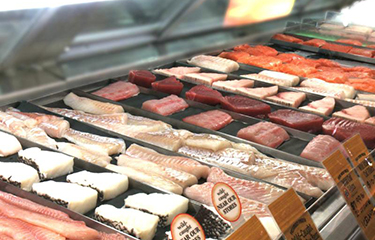NOAA has released its draft National Seafood Strategy, which will outline how the administration supports the domestic U.S. seafood economy and seafood sector in the coming years.
The strategy, released 14 February, focuses on NOAA Fisheries’ work on managing the country’s marine fisheries “based on sound science.” It also addresses a number of other factors affecting the seafood industry, including the financial viability of the industry, the resilience of coastal communities that depend on fishing, the effects of international trade – and the opportunities it can present, and the importance of seafood as a source of nutrition and food security.
NOAA said the crafting of the document had a few main drivers, the first of which is that seafood is “good for people.”
“Seafood is one of the best sources of nutrients essential for human health and well-being,” NOAA said. “It is also critical to providing food to a growing global population.”
The second driver is that seafood is “good for the economy.” The U.S. harvests around 10 billion pounds of seafood each year, with a dockside value of USD 6.3 billion (EUR 5.89 billion) annually. On top of that, according to NOAA, the seafood industry supports 1.2 million U.S. jobs and generates USD 165 billion (EUR 154.5 billion) across the broader economy.
The final driver of NOAA’s draft strategy is that seafood is “good for the planet.”
“Harvested responsibly, as it is in the United States, seafood is also an environmentally friendly way to produce a nutritious food given its relatively low carbon footprint and efficient use of resources, and is increasingly a critical part of food systems designed to reduce and mitigate the effects of climate change,” NOAA said.
Using those drivers, NOAA has created four main goals for the draft National Seafood Strategy. The first is sustaining or increasing U.S. wild-capture production via the use of fisheries science, fisheries management, and habitat conservation to support fisheries.
NOAA also said it is aiming for a “climate-ready seafood sector.”
“Changes in ocean conditions and the resulting shifts in distribution and abundance of marine resources, as well as the intensity of damaging storms are affecting access to and production of seafood as well as subsistence and Tribal fishing,” NOAA said. “These factors, in addition to new ocean uses and advances in sampling technologies and data modernization call for an evolution in science and management frameworks for a climate-ready seafood sector.”
The strategy document also calls for an increase aquaculture production in the U.S. through support of sustainable growth of the domestic industry. To do that, the organization said it wants to “accelerate progress on implementing an efficient, predictable, timely, and science-based regulatory framework for marine aquaculture.”
In addition to an “efficient, strategic, and science-based regulatory approach,” NOAA said a core goal of the draft strategy would have NOAA provide “science-based advice and tools” to grow the U.S. aquaculture sector.
Increasing access to domestic and global markets for the U.S. seafood industry is another goal of the strategy.
“A thriving, well-regulated domestic seafood industry – capable of competing at home and abroad – will translate into greater global seafood supply and food security from sustainable U.S. fisheries,” NOAA said. “It will also decrease our reliance on foreign fisheries that are at greater risk of overfishing, IUU [illegal, unreported, and unregulated] fishing, and forced labor.”
The strategy calls for better promotion of U.S. seafood, highlighting its sustainability and nutritional value, calling for better coordination between federal partners to “put more U.S. seafood back on U.S. plates.” Fair trade, as well, is a key part of the draft strategy, and NOAA said it plans to combat IUU fishing and expand access for U.S. seafood to foreign markets.
The final goal of NOAA is to “strengthen the entire U.S. seafood sector,” which involves working toward supply chain improvements and workforce development.
“The Covid-19 market disruptions highlighted systemic challenges to the U.S. seafood industry and the importance of supporting the entire seafood/fisheries value chain, including after seafood hits the docks,” NOAA said.
NOAA said the strategy calls for it to support U.S. commercial fishing and aquaculture; work with other federal agencies to modernize U.S. seafood infrastructure such as vessels, hatcheries, ports, storage, and waterfronts; and initiate workforce development to attract new workers to the sector.
NOAA is currently requesting public input on the strategy through 16 March, 2023. NOAA said it also plans to host virtual listening sessions on the strategy on 2 March and 9 March.
Photo courtesy of NOAA







